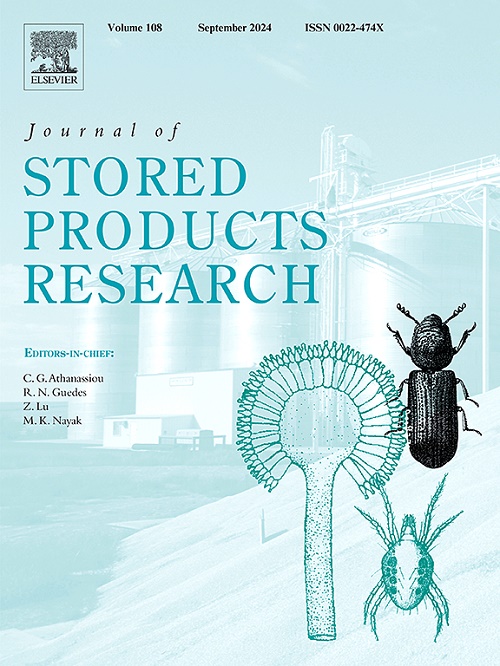Mechanisms and application of mycotoxin decontamination techniques in stored grains
IF 2.7
2区 农林科学
Q1 ENTOMOLOGY
引用次数: 0
Abstract
Ensuring the safe storage of food grains is paramount for global food security. However, mycotoxin contamination poses a significant threat by compromising grain quality and consumer health. Various decontamination techniques are employed to inactivate toxins, each with distinct mechanisms of toxin inactivation. This review examines the pivotal mechanisms in reducing mycotoxin levels in stored grains, elucidating the principles and pathways underlying novel decontamination techniques such as cold plasma, ozone, photocatalysis, nanoparticle adsorbents, and microbial enzymes, and assesses their practical application and industrial feasibility. Our thorough investigation reveals that the effectiveness of decontamination techniques relies on three fundamental mechanisms: adsorption, treatment with reactive chemical species, and biotransformation. Several novel technologies are highly effective in laboratory tests, but face challenges at the industrial scale. Current research indicates that novel decontamination techniques, including pulsed light, photocatalysis, and microbial enzymes, hold much promise in significantly reducing fungal growth and mycotoxin contamination in grains. However, it is also evident that techniques with high efficacy in reducing fungal infestations are not necessarily effective in eradicating mycotoxin contamination. A combinatory approach to these techniques is the way forward, and future research should focus on hybrid treatments to enhance the effectiveness of these technologies on an industrial scale. This review aims to bolster food safety and mitigate economic losses linked to mycotoxin contamination in grains by offering a theoretical basis for developing and implementing effective decontamination strategies.
求助全文
约1分钟内获得全文
求助全文
来源期刊
CiteScore
5.70
自引率
18.50%
发文量
112
审稿时长
45 days
期刊介绍:
The Journal of Stored Products Research provides an international medium for the publication of both reviews and original results from laboratory and field studies on the preservation and safety of stored products, notably food stocks, covering storage-related problems from the producer through the supply chain to the consumer. Stored products are characterised by having relatively low moisture content and include raw and semi-processed foods, animal feedstuffs, and a range of other durable items, including materials such as clothing or museum artefacts.

 求助内容:
求助内容: 应助结果提醒方式:
应助结果提醒方式:


